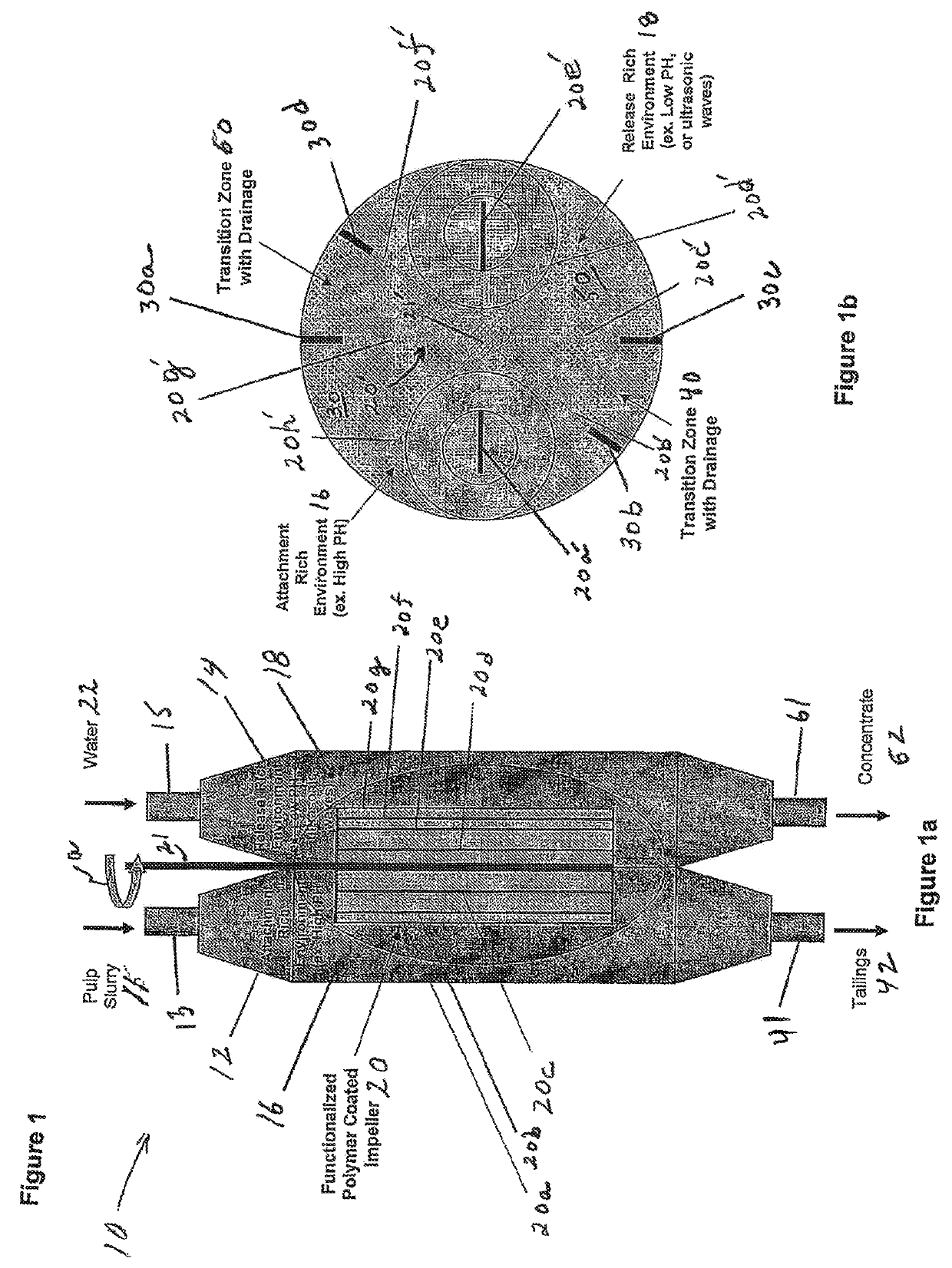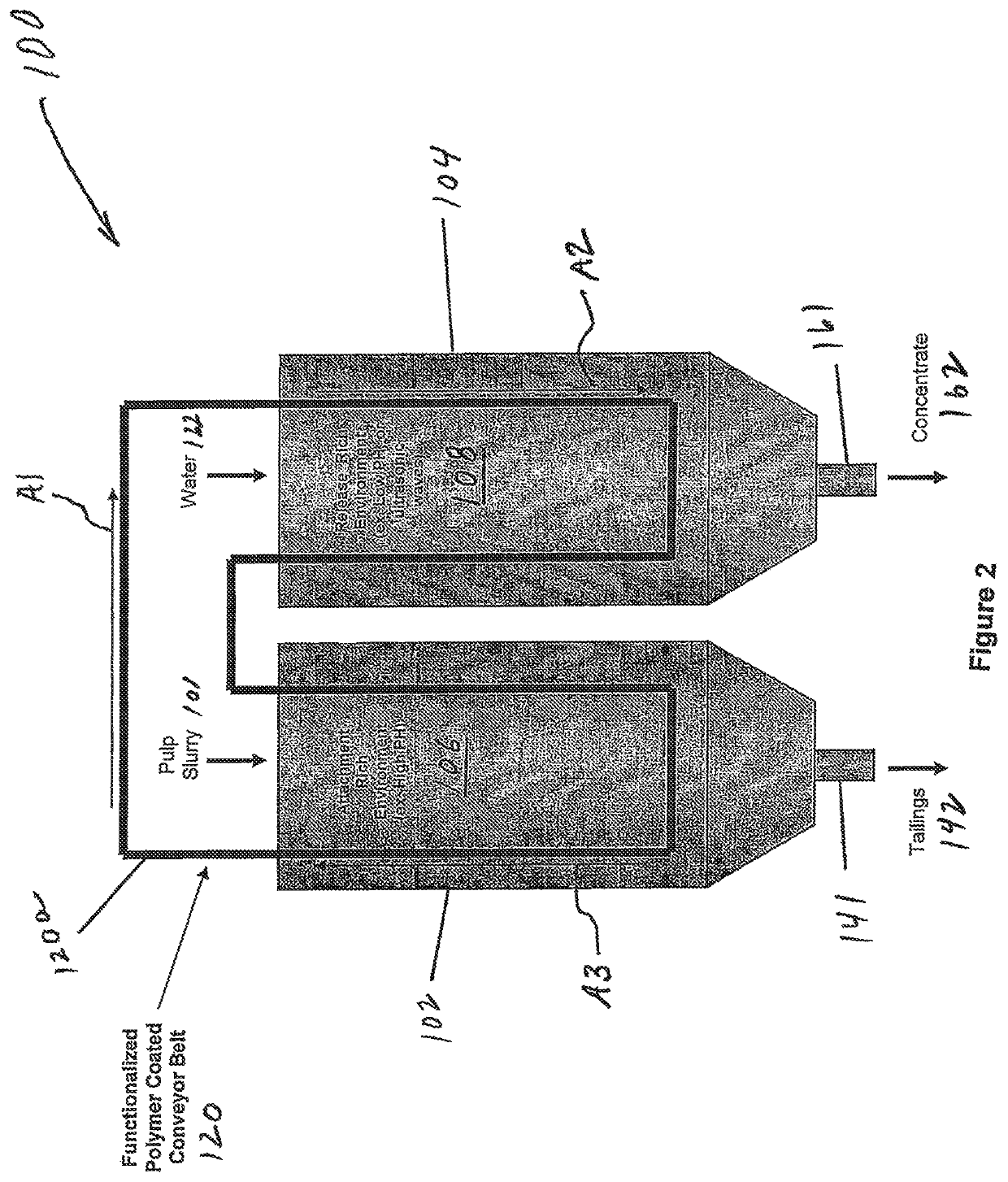Opportunities for recovery augmentation process as applied to molybdenum production
a technology of molybdenum and augmentation process, which is applied in the direction of separation process, filtration separation, moving filter element filter, etc., can solve the problems of less than ideal process, slow molybdenum kinetics, and undesirable hydrophilic particle entrainment, so as to eliminate the entrainment of hydrophilic particles
- Summary
- Abstract
- Description
- Claims
- Application Information
AI Technical Summary
Benefits of technology
Problems solved by technology
Method used
Image
Examples
Embodiment Construction
[0110]In summary, FIGS. 19A and 19b show a new and unique Cu / Mo separation media technology according to some embodiment of the present invention vis-a-vis the prior art techniques shown in relation to FIGS. 18A and 18B. The remaining FIGS. 1 to 16b show the subject matter of the aforementioned PCT application no. PCT / US12 / 39631 (712-2.395-1 / / CCS-0123), which is incorporated by reference, and which shows examples of the engineered polymeric hydrophobic media, as well as other technique that may be under in conjunction with that disclosed in relation to the new and unique Cu / Mo separation media technology shown in FIGS. 19A and 19B.
FIG. 19A: Media-Enhanced Moly Separation Technique
[0111]FIG. 19A shows a Cu / Mo separation media processor or circuit generally indicated by 600, according to some embodiment of the present invention. The Cu / Mo separation media processor or circuit includes steps / stages 602, 604, 606, 608, 610, 612, 614, 616, 618, as well as a series of steps / stages indicat...
PUM
| Property | Measurement | Unit |
|---|---|---|
| particle sizes | aaaaa | aaaaa |
| sizes | aaaaa | aaaaa |
| size | aaaaa | aaaaa |
Abstract
Description
Claims
Application Information
 Login to View More
Login to View More - R&D
- Intellectual Property
- Life Sciences
- Materials
- Tech Scout
- Unparalleled Data Quality
- Higher Quality Content
- 60% Fewer Hallucinations
Browse by: Latest US Patents, China's latest patents, Technical Efficacy Thesaurus, Application Domain, Technology Topic, Popular Technical Reports.
© 2025 PatSnap. All rights reserved.Legal|Privacy policy|Modern Slavery Act Transparency Statement|Sitemap|About US| Contact US: help@patsnap.com



